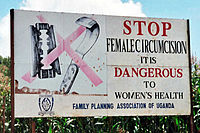
Photo from wikipedia
Reducing the volume of blood sampled from neonatal or paediatric patients is important to facilitate research in a group that is under-represented in clinical studies. Not all patients have a… Click to show full abstract
Reducing the volume of blood sampled from neonatal or paediatric patients is important to facilitate research in a group that is under-represented in clinical studies. Not all patients have a cannula available for blood sampling, meaning there are real advantages in obtaining a blood microsample by skin prick. In this study, the results obtained from both capillary microsamples (CMS) and a microfluidic (MF)-CMS by skin prick are compared to conventional plasma sampled from an arterial catheter in a clinical bridging study. Six critically ill patients receiving meropenem were included with the incurred sample reanalysis test meeting the acceptance criteria for both CMS ( n = 24 samples) and MF-CMS ( n = 20 samples). Bland–Altman plots comparing MF-CMS to conventional arterial blood sampling revealed a difference of − 12.7 ± 22.1% (mean ± standard deviation (SD), and comparing CMS to conventional arterial blood sampling a difference of − 3.4 ± 17.0%. At − 12.7%, the bias between MF-CMS and conventional sampling is greater than the bias found with CMS, although within the limit of acceptability for analytical accuracy (that being ± 15%). Samples collected by skin prick and using CMS produced meropenem concentrations that were comparable to those obtained from conventional arterial catheter sampling. CMS samples were found to be stable when stored in the capillary tube for 24 h at 5 °C or for 4 h at room temperature.
Journal Title: Analytical and Bioanalytical Chemistry
Year Published: 2022
Link to full text (if available)
Share on Social Media: Sign Up to like & get
recommendations!